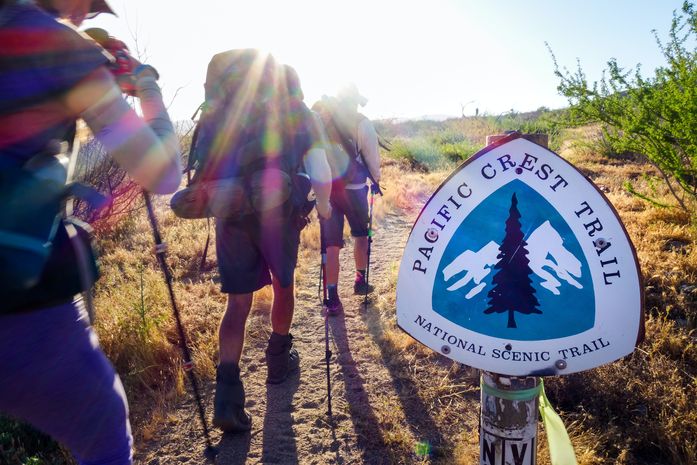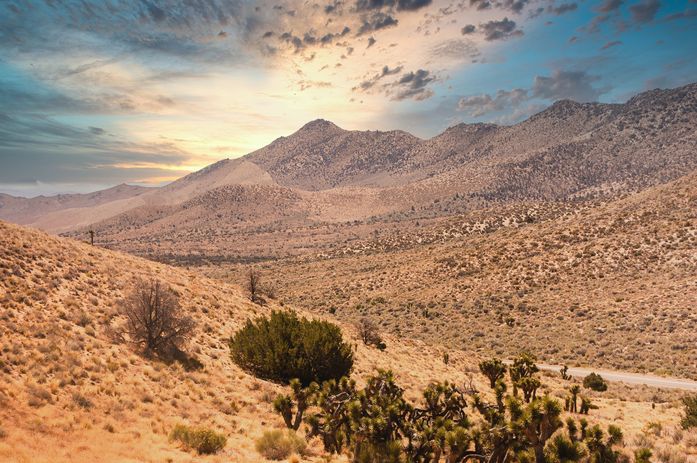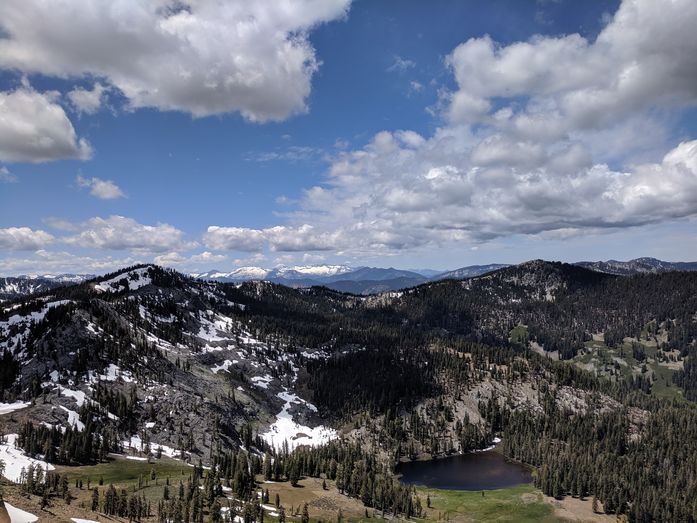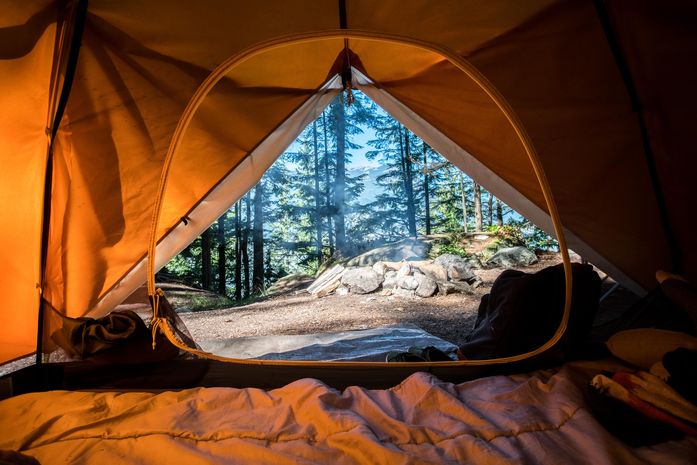The Pacific Crest Trail, also known as Pacific Crest National Scenic Trail, is a long hiking and horse-riding trail that follows the route along the Sierra Nevada and the Cascade mountain ranges. It is located about 160 to 240 km on the eastern side of the U.S Pacific coast.
This article aims at providing a practical guide to hikers looking forward to hiking in along the Pacific Crest Trail.

How far does the Pacific Crest Trail Stretch?
The trail borders Mexico just at the borders with the US on the Southern side and the Canadian borders on its Northern side. It traverses British Columbia and the States of Washington, California, and Oregon.
This beautiful winding trail covers a total distance of 4270 km and ranges in altitude, the lowest point being sea level at the border point of Oregon and Washington, while the highest point is 4009 m above sea level found in the Sierra Nevada at the Forest Pass.
The length is approximately 4270 km but the value reported by different sources differs slightly for two main reasons:
First, the routes are distorted almost every year to improve the experience by creating better sceneries. The trail can also be rerouted to avoid calamities such as wildfires or potential mudslides.
The second reason behind the discrepancy is that consumer-level tools that are used for mapping never provide accurate data sets. The reported length is therefore approximated to the nearest value, which in this case is 4270 km.
The trail contains 30 sections, each of which is approximately 146 km in length. Eighteen of the sections are found within California, seven in Oregon, and five are located in Washington.
History of the Pacific Crest Trail
The idea behind the Pacific Crest Trail was first conceived by Clinton C. Clarke in 1932. The plan was to have it run from Mexico to Canada, passing through the summits of mountain ranges in Washington, California, and Oregon.
The initial intention was to join three trails, namely, the Skyline Trail in Oregon, John Muir and Tahoe-Yosemite trails in California, and the Cascade Crest trail in Washington.
To advance these plans, Clarke formed a conference whose mandate was to implement the suggestions and also petition the federal government to provide protection. The conference consisted of Ansel Adams (an American Environmentalist and photographer), the Boy scouts of America and YMCA.
Between 1935 and 1938, YMCA groups went on an exploration mission where they came up with 2000 miles tentative route for the trail. Most of the trail was adopted in the final route.
Over the years, more developments were carried out on the trail to bring it to modern standards. These improvements were made possible by the cooperation between the federal government and the Pacific Crest Trail Association, with the help of volunteers.
Thru-Hiking on the Pacific Crest Trail

Thru-hiking is a term used by hikers to mean, journeying through a hiking trail continuously from one end to the other. Hikers take their time to prepare for the journey, which may take anything between four and six months. Dedication and discipline are the key attributes for anyone intending to go for thru-hiking.
Data collected by the Pacific Trail Crest association indicates that thru-hiking the trail requires preparation of between six and eight months. This includes planning, training, and prepping all the equipment and supplies.
However, even after all the preparation and training, they noted that the completion rate was still low, at around 14%.
Weather patterns can be unpredictable; hence hikers are often required to be flexible. Depending on the intensity of the snowpack in the different sections at specific times, hikers might decide to flip-flop. Flip-flopping means starting off in an unconventional location on the trail, hiking northbound partly, then southbound for the rest of the way.
When preparing for thru-hiking, hikers are required to establish their resupply points which include towns where they can buy their supplies (food, cooking fuel, toiletries) and post offices. Post offices are essential because hikers often prefer posting extra luggage to collect at the stations ahead.
Another essential preparation step is creating an estimated completion schedule. The highest chances are they might not stick to the schedule because of some unseen constraints, but if they are disciplined enough, the deviation will not be much.
A completion schedule is necessary because it contains a plan on how to counter huddles in different sections, such as harsh weather conditions.
A Northbound journey for example can easily be delayed by the deep snowpack in the Sierra Nevada, hence you can delay the arrival to Sierra and still make sure you don’t take too long to get to the Northern cascades. You need to balance the completion schedule.
Over the years, the Pacific Crest Trail Association has developed a practical schedule for thru-hikers to help them avoid harsh weather conditions. If you are hiking Northbound, you are advised to start towards the end of April and end of July if when trekking Southbound.
The most practical daily coverage for most thru-hikers is an average of 32 km per day. Trekking through a desert takes a shorter time than in snow. This means that on some days, you will cover a longer trail, while on other days, you will barely move.
For this reason, thru-hikers have a norm of setting destination goals as opposed to calculating the daily distance covered.
Points to Note when Thru-Hiking the Pacific Crest Trail
First, you have to understand that you cannot carry the supplies and food to last you the whole trail. You should therefore ship your supplies to different towns along the route. The packages should include clothes and food, and personal utilities.
The second and also equally important point to note is that you will encounter different weather conditions along the trek. At some point, you will be enjoying the warmth, and then a few weeks down the line, it will be snowing.
Thirdly, wild animals should be the least of your concern along the Pacific Crest Trail. However, this does not mean that you will not occasionally run into snakes. The Northern California and Oregon stretch is common with bees and you are required to be cautious not to interfere with their habitat.
Next, be aware that water can be scarce in some sections, such as the Hat Creek Rim in Northern California and the stretch going through the desert. While there are kind hikers and locals who leave behind water in containers for the trekkers, you cannot depend on that.
Remember, water is the most important supply when hiking. When planning for the journey, map out the areas where you are more likely to go for long before finding a source of water. Ensure you have at least 2 liters when getting into such sections.
Finally, have a well-maintained tent because it will offer you shelter for the most part of the hiking. The only time you will get to enjoy a modern bed is when you stop over in the towns. If you plan your journey well, you might have these moments more often.
You should also note that not all towns will provide you with comfortable sleeping space. The motels can get full as well, especially during peak hiking seasons.
How to Prepare for Thru-hiking on the Pacific Crest Trail

Thru-hiking along the Pacific crest trail will put all your body systems to the test. You will get tired and feel like giving up.
The important things that you need to do before starting off the trek include:
- Rigorous physical training so that your body is in good shape to withstand the trail.
- Medical checks to ensure you are in good health. However, this does not guarantee that you will not fall sick somewhere along the way.
- Prepare mentally by reading and researching as much information as possible about the trail. It is also important to note down the reasons why you are going for the hike, as this is what will keep you going when you feel like giving up.
Get inspiration from hikers who have gone ahead and completed the trail.
- Find out whether there are places where you will need special permits, such as fire permits. Also, consider the borders that you may need to cross and get the necessary documentation.
- Collect all the equipment that you will need. A map of the trail is mandatory since the place is not marked appropriately. Some signage can even get broken or vandalized. A compass is also necessary.
- Shop sufficiently for your personal effects since most stores found along the way might only have the basic necessities. These include toothbrushes and toothpaste, toilet paper, bathing soap, body oil, and any other items that you cannot do without.
Do not forget to pack up your sun protection items, such as a hat, sunscreen, and sunglasses. You will need them in the desert.
- Pack a water filter since you will find yourself drinking water from the streams. You do not want to develop stomach problems in the jungle.
- A first aid kit is not optional, much as you will be careful not to get hurt or eat something that will react badly with your stomach; accidents are imminent. The first aid kit has to be in your permanent luggage.
You can also ship some more medical items to replenish your stock and to be sure you don’t run out.
- Get a reliable headlamp that uses batteries and/or solar energy. Much as you will not hike at night, you will need the light to set up a tent and to look out in case you hear any unusual sounds.
In places where there is a chance that wild animals will pass by, you might need to hang the headlamp outside the tent to keep them away.
- Remember the small items that you can easily bypass but which can save you from a bad day. These include safety pins, duct tape, lighters and matches, pen knives, zip lock bags, and rubber bands. You may need an ice axe for the snowing areas and a light insulated blanket.
- Finally, carry some cash with you. Some stores in the smaller towns might not accept card payments, and you may also need to tip some locals for showing you directions or any other favor they may extend.
What to note about food supplies when Thru-Hiking on the Pacific Crest Trail
- You cannot pack six months’ worth of food whether you are carrying it with you or shipping ahead. Unless you are an experienced hiker, you will not be able to estimate the correct quantity for the whole journey.
Have enough for the trails and replenish at the stores. Food is cheap in small towns, and you can get variety. Buy enough at the resupply station to last you the next phase of the trail.
- Specific categories of food are highly recommended for hikers who are thru-hiking the PCT. They include foods rich in calories, proteins, and fats, among other nutrients. You will need more calories than you eat in your daily meals.
The food should be easy to carry around and with a long life.
The most common foods that hikers bring with them to the trails include:
- Pasta
- Cheese
- Protein powder and protein bars
- Olive oil
- Peanut butter
- Noodles
- Tortillas
- Canned beef, salami, or tuna
- Nuts and seeds
- Oatmeal
- Dried fruits and vegetables
- Before deciding what to bring to a specific section, consider whether there are laws prohibiting the lighting of fires in camping areas. In such a case, only pack ready-to-eat food.
- When heading to the desert areas, carry more water than food.
The most popular resupply stations listed from North to South
Washington
- Stehekin
- Stevens Pass/Skykomish
- Snoqualmie
- White Pass
- Trout Lake
Oregon
- Shelter Cove
- Crater Lake/Mazama Village Store
Sierra
- Sierra city (NorCal)
- Kennedy Meadows
Desert
- Warner Springs
How much will it cost to hike the Pacific Crest Trail?
Thru-hiking on the pacific crest trail is not a cheap affair. You need to plan your finances well because you will spend money, and you will also be out of work for about 5-6 months.
On average, the total expenses add up to about $6,000. Without proper planning and sticking with your budget, the expenses can easily reach $10,000.
Here is a list of the main expenditure overheads that you need to plan for in your budget. The prices will differ depending on your location.
Hiking gear
As an experienced hiker, you may not need to spend much on the gear because chances are you already have them. New hikers will, however, need to purchase the right gear. The quality and weight of the gear are factors to consider because you do not need to move around with excess weight.
Food
There is the actual cost of buying food and the cost of shipping resupply consignment. At times, you will need to buy fresh food in the towns, and having some cash with you will help. You need to be disciplined on this because your budget can easily go overboard.
Accommodation in the towns

Once in a while, you will miss sleeping in an actual bed, and the temptation will get real as you approach the towns. Always keep in mind that this will be at a high cost. You will also need to have some fun and sample a few things in the town. Consider this when planning your budget to avoid running out of funds along the way.
Conclusion
In conclusion, do not leave home to go hiking on the Pacific Crest Trail without informing family and friends of your intentions. The trail can be unforgiving and hikers more often get into emergency situations that require evacuation.
You might also need to get a new item say a pair of shoes from a specific store in your home town and your family and friends will be of help.
I hope the article was informative enough, let us know in the comment section.
